Tewa Design Source
Tewa Design Sources
The Northern Tewa people are mostly from the villages of Ohkay Owingeh, Santa Clara, San Ildefonso, Pojoaque, Nambé and Tesuque. The Hopi-Tewa of Arizona are descendants of the Southern Tewa. The Tewa share a common heritage from back in the 1200s CE, when their ancestors lived in the canyons and valleys west of Mesa Verde. When the Great Drought hit (around 1276 CE), they were already on the move because of other recent bad weather events. The kachina cult was developing around the same time and however it worked out, never took hold among the Tewa. The Tewas did incorporate the Medicine and Sacred Clown societies into their religious activities. Archaeologists have traced their tracks east from the Four Corners to the South San Juan Mountains, where they turned south and first built homes in New Mexico around Ojo Caliente. From there, they spread further south into the valley of the Rio Chama and then spread out there for a hundred years.
As more and more Dineh and Apaches came into the area in the 1400s, the Tewa moved downstream along the Chama. Some of them moved up onto the Pajarito Plateau while others sorted out into small villages on the east side of the Rio Grande. Shortly some of them came to the southern edge of the Santa Fe River Basin and found the Galisteo Creek Basin on the other side populated by Eastern Keres people. It was the same when they came to the mouth of the Santa Fe River at the Rio Grande: further south along the river was populated by other Eastern Keres people. And just upstream across the Rio Grande was the outlet of Frijoles Canyon, home of many Eastern Keres people in the 1400s and 1500s.
There were indigenous Tanoan people already living throughout the Rio Grande area and the two groups merged reasonably well. Somewhere in this time period, sodalities came into being: the Summer People and the Winter People. Some archaeologists believe the incoming Tewa became the Summer People and the Tanoans became the Winter People, based on the fact the incoming Tewas brought new seeds, new agricultural and ceramic technology, new dances and new religion. When the Spanish first arrived in the area around 1540 CE, the Tewa Basin was well occupied by the merged Tewa/Tano people. Those Tanoans who preferred not to merge built separate pueblos for themselves in more marginal areas in the Santa Fe and Galisteo River basins. Depopulation began after the Spanish left and didn't take their various diseases with them. It was after Don Diego de Vargas arrived in 1598 that the survivors were separated into their separate villages and restricted to those.
The Northern Tewa
The Northern Tewa design pallette contains a number of motifs common to many puebloan societies: hummingbirds, turtles, tadpoles, quails, owls, deer, hands, hoof prints, bird tracks and more. It's easy to see how many evolved from designs from the Flower World Complex of central Mexico. The Santa Clara and Nambé avanyu is a winding serpent with usually, one or three feathers on the top of its head. The San Ildefonso avanyu usually has a three- or five-pronged plume on its head. The avanyu itself is evolved from images of Quetzalcoatl. While the avanyu is the protective spirit of water and springs it also represents what happens when there's a heavy rain in the desert: flash floods that can wipe out whole villages.
Most San Ildefonso potters paint their decorations, only a few work with sgraffito decorations and a few work with inlaid stones and heishi beads. At Santa Clara, potters carve, scratch and paint their pieces, then sometimes reheat them with a blowtorch and mount stones on them... almost anything goes. The design palette is traditional to trend-setting contemporary, although the subject matter is usually the avanyu, or hummingbirds, turtles, quails, fish, deer, bear paws and bear claws, etc.
Because they had easy access to micaceous clay, the people of Nambé and Ohkay Owingeh built a brisk business in making micaceous pots and cookware, similarly to the people of Taos and Picuris at the time. More recently, Lonnie Vigil and Robert Vigil have produced micaceous pottery at Nambé while Clarence Cruz has been producing micaceous cookware and utensils at Ohkay Owingeh.
The people of Ohkay Owingeh decided to start over after essentially losing their pottery tradition in the 1800s. They never stopped making utilitarian pottery but even that declined in the late 1800s. In the 1920s, when it was decided they would work to revive a purely Ohkay Owingeh tradition, they settled on the designs found on some prehistoric pottery that had been found while digging in an old Tewa pueblo on Ohkay Owingeh land. The pottery was dated to the few decades before the Spanish arrived, hence: pre-contact and innocent of European influence. Their definition of Potsuwi'i pottery is very specific as to the colors and textures of the clay used and the designs carved, scratched or painted on them. Many of the design patterns are reflective of rock art from a thousand years ago.
The Southern Tewa
The Santa Fe Basin is where the Southern Tewa settled. They seem to have followed the idea that "further south is a better life," and they kept going south until they came up against other relatively entrenched people (migrants spreading out from Santo Domingo into the Galisteo Creek Basin). The Santa Fe Basin showed signs of having been occupied by the Tanoan people off-and-on over the centuries. It was a marginal landscape for farming but it was up against the Cerrillos Hills where they found turquoise, silver and lead ore. The turquoise trade was very profitable for some but the lead ore made possible different design techniques to use on fired pottery. The potters of the village did well producing lead-glazed pottery (not sealed, glazed only where the lead paint was applied and then ran in the heat of the fire).
In 1692, when the Spanish arrived in full force to reconquer northern New Mexico, most of the Tewa people in Tewa Basin gathered atop Black Mesa, a volcanic plug that sits between Santa Clara and San Ildefonso Pueblos. They stayed up there for months, almost impervious to Spanish attack. Eventually, though, they made a deal with the Spanish and returned to their various pueblos.
Shortly after that, the Spanish issued an order limiting access to the lead mines at the Cerrillos Hills to Spanish citizens only and, with that, the Southern Tewa lost their last possibility for remaining in a parched landscape. Because of the boundaries imposed by the Spanish, they all ran north in the night to the area of Chimayo. That didn't work out quickly, so they moved to the area of Santa Clara, again during the night. That didn't work out either as they were challenged by a Spanish priest and they killed him. From there they moved quickly to the area of Zuni, then up to First Mesa where they made a deal with the people of Walpi and were shortly living in their own village near the base of First Mesa. Over the centuries they came to be known as the Hopi-Tewa. In that same time period many of the religious aspects of Hopi society have made their way into Hopi-Tewa society. The Hopi-Tewa design pallette consists mostly of designs revived from potsherds found around the ancient pueblos of Awatovi, Sikyátki, Payupki and Kawaika'a, all of which are in the vicinity of the Hopi mesas.
Showing 1–12 of 20 results
-

Alvin Baca, zzsc3d142, Black melon jar
$265.00 Add to cart -

Johnny Cruz, zzsi3d140, Micaceous bowl with a geometric design
$225.00 Add to cart -
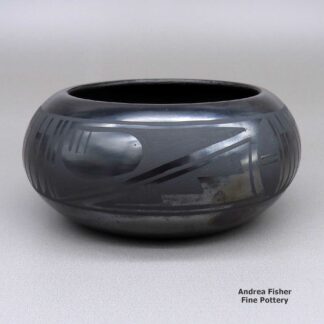
Johnny Cruz, zzsi3d142, Bowl with geometric design
$375.00 Add to cart -
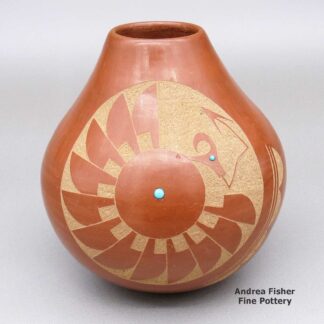
Juan Tafoya, cjsi3c230, Red jar with sgraffito design and inlays
$650.00 Add to cart -

Kevin Naranjo, cjsc3c260, Miniature bowl with sgraffito design
$375.00 Add to cart -
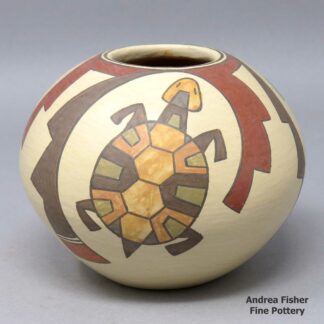
Lois Gutierrez, rwsc0k110: Polychrome jar with 3-panel turtle and geometric design
$375.00 Add to cart -

Lonnie Vigil, rcna3d196, Golden micaceous jar with fire clouds
$4,900.00 Add to cart -

LuAnn Tafoya, zzsc3b547, Bowl with geometric design
$6,500.00 Add to cart -
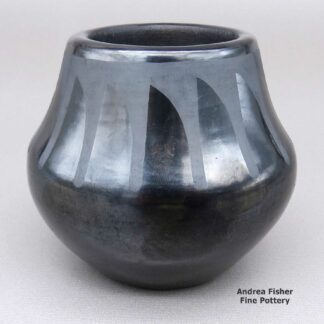
Maria Martinez, cjsi3c238, Black-on-black bowl with geometric design
$1,150.00 Add to cart -

Maria Martinez, rosi3d140, Black bowl with a geometric design
$3,500.00 Add to cart -

Maria Martinez, rosi3d141, Black-on-black bowl with geometric design
$4,900.00 Add to cart -
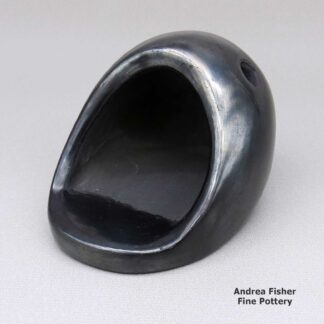
Maria Martinez, thsi3b011, Polished black horno
$1,100.00 Add to cart
Showing 1–12 of 20 results